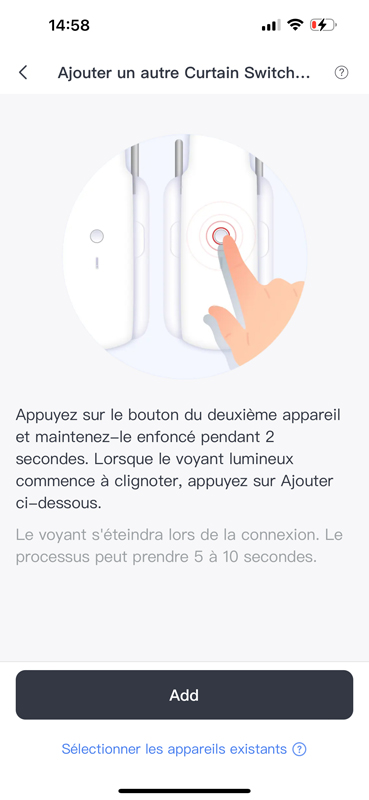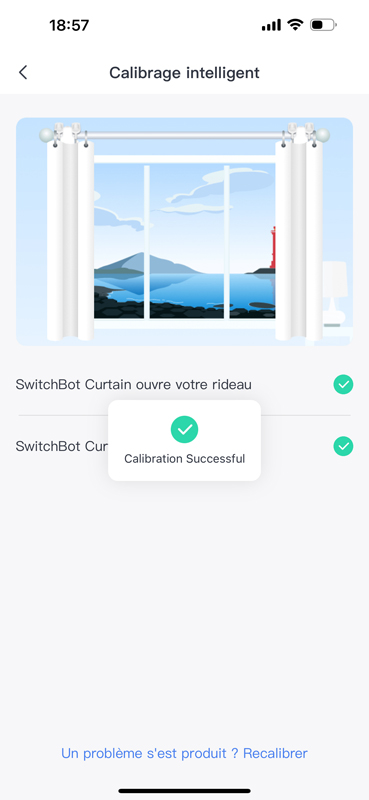SwitchBot Curtain 3 aims to connect and automate all your curtains, regardless of the type of cornice. We tested it for you!

In a world where connectivity and robotics are present in every corner of our homes, the SwitchBot Curtain 3 seems to promise extra comfort, even if it looks almost decadent. This robot simply motors your curtains, allowing very precise remote control from a smartphone or via voice assistants.
This third generation promises to correct the shortcomings of previous models by being quieter and faster. Although this product seems to have it all, it still costs €89.99 per window, a price that doubles if you have double curtains! However, it offers the promise of entering a world where closing and opening the curtains no longer requires movement. An interesting product to test, on the border between a gadget and a real well-being tool.
In-depth design and build quality
SwitchBot Curtain 3 is a product whose design expresses above all its function, which does not prevent it from being relatively aesthetic. Remember, however, that it must remain hidden behind the curtain; so it’s not so bad if it doesn’t catch your eye. The robot consists of a white central body that integrates the motor, battery and Bluetooth connection.

This slim device measures 4.2 cm x 5.1 cm x 17.3 cm and weighs 280 grams. It is accompanied by two arms, each provided with two wheels, which must be connected to the central body and which provide support to the cornice. Once installed, the robot is almost invisible unless the curtains are transparent. Its polycarbonate design makes it a sturdy object with impeccable assembly. The device can support and move curtains weighing up to 15 kg, with a rod diameter of 1.5 cm to 4 cm with a circumference of 4.8 cm to 12.5 cm. In addition, the manufacturer is thinking about extension rods. Thus, the robot is compatible with height differences of up to 0.35 cm.

Curtain 3 is equipped with a 3350 mAh lithium-ion battery, providing up to eight months of battery life for one opening and closing per day. The manufacturer had the excellent idea to offer a solar panel (at €69.99) that can be connected via USB to the product to recharge it during the day.
Its hinged arm allows it to be oriented to optimize reloading. In theory, you’ll never need to recharge your bot, which our tests seem to confirm. But with numerous opening and closing of curtains, it is not certain that this is enough to compensate for this kind of electricity consumption.
Installation: much simpler than the manual suggests
Curtain 3 comes with several accessories to handle any situation. So, in addition to the robot’s body and two arms, it includes a reset tool, curtain clips with legs, a string of beads, a wet wipe for cleaning surfaces and a magnetic patch.
Before starting the physical installation, you need to install the Switchbot app.
The app automatically recognizes the device and Bluetooth pairing with the robot is almost instant. At the end of this process, you will have access to icon or video tutorials to guide you through the physical installation of the robot. The whole thing is very clear and adapts to all configurations. Whether you have chains or other types of poles, you will find everything you need for a successful installation.
In the case of curtains with eyelets, we mounted the robot on the rod, behind the curtain. First you need to place your hands. Then press the side button on one of the arms and pull firmly.
You shouldn’t hesitate to apply force to it, otherwise nothing will move. You can then connect the first arm to the body, then do the same with the second. In this way, the robot is perfectly fixed to the rod, providing flawless support.
Once the robot is installed, we need to get it to control the curtains. In our case, we use a chain of beads with clips to hang on each ear. Thus, when the robot moves, the eyelets are pulled by it.
The final step is to apply a magnet patch. The latter will indicate to the robot the limits that must not be exceeded. Therefore, you need to clean the bottom surface of the rod, put the robot in the “curtain closed», then place the patch so that only the wheels of the central body and the arm opposite the end of the stroke are located on it.
You may feel some anxiety before starting this process, especially if you have read the paper manual, which may be unclear. But in reality, if you follow each step methodically, in less than 10 minutes your robot will be installed.
Uses
Before talking about use, it is necessary to complete the installation process. If you have a double curtain, you will need two robots. You will then need to repeat the process a second time and combine the two robots.
The operation is very simple and the app guides you step by step to avoid any mistakes. Then, through the application, you will determine the type of installation, whether for one or two curtains.


Curtain 3 then begins an automatic calibration process starting from position “curtains closed“. The robot will then measure the length of the rod by opening the curtains and determine the stopping point itself. If this does not seem accurate enough, manual calibration is also possible.


Added to this are built-in safety mechanisms such as obstruction and overload protection, ensuring safe everyday use.
You can then set the open and closed positions of the curtains in the app. We are not limited to open and closed positions; you can choose the aperture level quite precisely. Screen visualization representing curtains makes control very intuitive.
In addition to manual control, it is possible to program schedules to automatically open and close the curtains to suit your lifestyle. These automations can be adjusted to respond to specific events, such as opening at the first rays of the sun or closing at sunset.
Curtain 3 is really nice to use. The movements are smooth and its ability to control curtains weighing up to 15 kg, over a maximum length of 3 meters and at a speed of 5 mm per second, is a promise kept. The QuietDrift mode moves the curtain at a reduced speed, which significantly reduces the noise generated. The movement is much longer, increasing to 1 mm per second. However, we’re down to just non-existent noise pollution, compared to around 52dB per meter in normal mode. This is very noticeable, especially in the morning when you wake up.
Let’s move on to the thorny topic: the integration of voice assistants. Although the Curtain 3 is compatible with Google Assistant, Amazon Alexa and Siri, as well as IFTT and Smarthing, it requires the use of a SwitchBot Hub, which acts as a bridge between the Curtain 3 and the home network. This can be a little limiting unless you want to take full advantage of connected curtains in your home or accessorize with other products from the brand. As we have not received this hub we cannot comment on performance with them.
SwitchBot Curtain 3 price and availability
SwitchBot Curtain 3 is available on the brand’s official website as well as on some third-party distributors such as Amazon.







